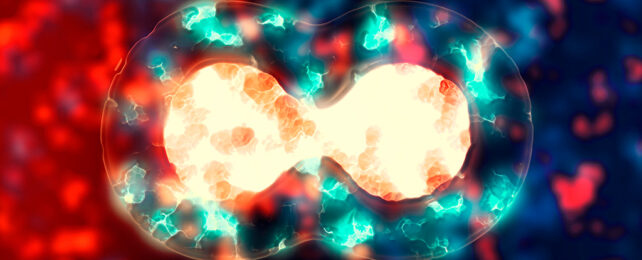There's a window of time in our lives we've all passed through yet still know so little about: early gestation. Now researchers have found a pair of genetic deletions associated with schizophrenia that likely occur in that formative period.
The discovery comes from a team of researchers led by Harvard Medical School clinician-scientist Eduardo Maury, who combed through genetic data from blood samples of nearly 25,000 people with or without schizophrenia.
While the two genetic alterations need further validation, the findings strengthen an emerging idea that the seeds of schizophrenia aren't always inherited, yet still may be acquired long before someone meets the world.
If so, it opens the door to early prevention a fraction wider.
Schizophrenia is a serious neurological disorder arising from a complex mix of genetic and environmental factors, with events such as childhood trauma or viral infections likely playing a role, amplifying someone's risk of experiencing its symptoms of delusional or disordered thinking later in life.
It affects in 1 in 300 people worldwide, usually manifesting in early adulthood. Yet there is evidence to suggest the physiology responsible for schizophrenia originates either in early pregnancy or as a result of gestational complications.
In 2017, scientists studying bundles of lab-grown cells resembling tiny brains found evidence that disorganized brain cells dividing hurriedly and differentiating too early may give rise to schizophrenia. And in 2021, researchers pinpointed specific genes in the placenta that are active during complicated pregnancies and associated with the disorder.
Now Maury and colleagues have identified two genes, called NRXN1 and ABCB11, that appear to be associated with schizophrenia when copies of the genes go missing in utero.
"We're looking at mutations that are not inherited from the parents," explains Chris Walsh, senior author and geneticist at Boston Children's Hospital.
In NRXN1 and ABCB11, the researchers found alterations called copy number variations, a type of genetic error where copies of a gene or long stretches of DNA are duplicated or, in this case, deleted in one person compared to the next.
On rare occasions, copy number variations can be inherited, contributing to around 5 percent of schizophrenia cases. Those so-called germline mutations would show up in every cell of the body, since they were written into a person's genome before the fertilized egg undergoes its first division.
Research also suggests four out of five cases of schizophrenia can be traced back to genes inherited from the child's parents, with more recent studies adding to the list of known genetic links. Yet that still leaves roughly 20 percent of cases without an obvious basis in inheritance.
Of the two genes identified in this study, Maury and colleagues found partial deletions of NRXN1 in five cases of schizophrenia, and none in the unaffected individuals of their control cohort. This prevalence was much higher than in population-level databases.
NRXN1 helps brain cells transmit signals and it has been associated with schizophrenia before – when those mutations are inherited.
When mutations aren't inherited but acquired during early development or later life, they are termed somatic mutations. As these arise after embryonic cells have already begun separate journeys forming the different cells that will go on to create a full human, they will be passed onto the descendants of the cell with the mutation.
So somatic mutations are found only in a fraction of body cells; for example brain and blood cells, but not sex cells. This is the kind of NRXN1 mutation Maury and colleagues found.
The second gene identified, ABCB11, is known to encode a liver protein but its link to schizophrenia is far less certain.
Maury and colleagues found deletions within the ABCB11 gene in another five cases of schizophrenia, all of whom didn't respond to antipsychotic medications.
"That one came out of nowhere for us," says Maury of ABCB11. "There have been some studies associating mutations in this gene with treatment-resistant schizophrenia, but it hasn't been strongly implicated in schizophrenia per se."
Taken together, the researchers conclude that alterations in these two genes "may contribute a small but significant part of the genetic architecture of schizophrenia."
More research is needed to figure out just how much.
The study has been published in Cell Genomics.
